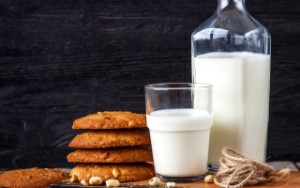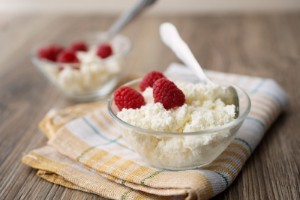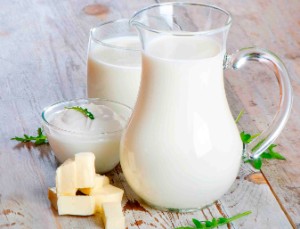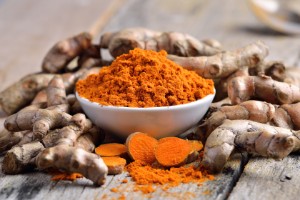Which cereals are good for liver health — Top 4
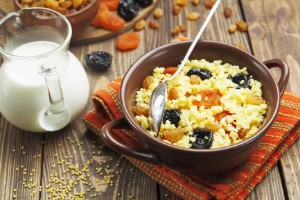 The liver helps to remove decomposition and metabolic products from the body, the dominance of which leads to serious pathologies (up to the development of tumors).
The liver helps to remove decomposition and metabolic products from the body, the dominance of which leads to serious pathologies (up to the development of tumors).
Whatever we load into ourselves, the liver gland will filter it out. But this process is not endless and sooner or later it may fail.
Poor nutrition, alcohol, cigarettes, a passive lifestyle, sleep disorders are the primary causes of problems with the gastrointestinal tract and, most importantly, with the liver.
It's probably worth starting with a diet correction. For example, various cereals have a lot of useful properties, especially for the liver and other digestive tract organs. For people suffering from liver, stomach and pancreatic problems, it is simply a storehouse of useful macro- and microelements and vitamins.
For example, one study Confirms that plain oatmeal prevents abdominal obesity and improves liver function.
Other Research indicates that buckwheat porridge has the property of breaking down fat accumulated in liver cells, thereby being a means of prevention and even treatment fatty hepatosis .
There are many other varieties of cereals that have a positive effect on our liver. Below we will talk about the 4 most common and useful of them.
1. Oatmeal
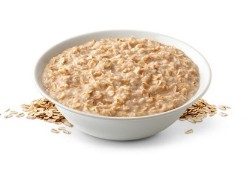 Oatmeal helps not only to improve the functioning of the digestive tract, but also to alleviate the symptoms of gastritis, pancreatitis and ulcers.
Oatmeal helps not only to improve the functioning of the digestive tract, but also to alleviate the symptoms of gastritis, pancreatitis and ulcers.
Cereals allow you to absorb excess fat, automatically lowering the energy value of other foods that you consume along with porridge.
Oatmeal is great for dieting in the treatment of liver diseases and many other organs. It is recommended to eat it for hepatitis, cirrhotic liver damage, fatty hepatosis, gout, vascular diseases, renal abnormalities, gastritis, pancreatitis, ulcers, etc. It is also good to use it after severe food poisoning, as it helps to remove the remnants of toxins from the body and restore the patient's strength.
6 medicinal properties of cereals:
- The gluten secreted by hercules is useful for the human stomach, as it envelops the irritated walls of the organ, reducing sensitivity and lowering acidity;
- The endocrine system is normalizing;
- Cereals contain a large amount of fiber, which is known to help with digestive disorders (in particular, constipation);
- Oatmeal is used not only as a gastronomic element, but also as a cosmetic. It is used in some preparations for skin and hair, as it is able to normalize the production of sebum;
- It is recommended to use this porridge for type II diabetes, since the substances in the composition affect not only cholesterol levels, but also serum sugar levels;
- Helps not only with constipation, but also with diarrhea, because it has strengthening properties.
In fact, this cereal is indicated for use in almost most diseases. The only exception is celiac disease.
Despite the fact that pre-Soviet and Soviet dietary recommendations provided for the use of oatmeal porridge in the morning for breakfast, now it is still not worth loading your stomach with porridge at such an early time. This porridge is not such an easy product to consume in the morning. Eat a plate of porridge for lunch or dinner. So the cereal will not fall on the stomach with an unaffordable load and will not cause unpleasant sensations of bloating and heaviness.
There are countless recipes for cooking oatmeal. Or rather, there are countless variations of the two main methods: milk and water. Below you will learn how to cook both varieties. If desired, you can add fruits, dried fruits, jam, jam and other delicious additives to your porridge. It all depends on your preferences and imagination.
1. On the water . The most preferred version of the dish for those who adhere to a therapeutic diet. It is prepared very quickly and does not require special skills.

- Fill one share of oatmeal with two parts of purified water.
- Put the mixture on a low heat and bring to a boil.
- After boiling, cook the porridge for another 10 minutes and do not forget to constantly stir it.
- Close the container with a lid and leave to stand for two or three minutes.
- Put a piece of butter in a saucepan and mix well.
- Serve it on the table.
- You can add some additives to the dish, for example, honey, fruit or jam.
2. On milk . This option is not so useful compared to the water recipe. It is also not suitable for some people suffering from pancreatitis, gastritis, obesity, fatty hepatosis and lactose intolerance.
Sometimes milk is replaced with less "heavy" dairy products (kefir, yogurt). In this case, the porridge will be easier to digest.
- Take one portion of hercules flakes and three parts of kefir or yogurt.
- You can immediately add dried fruits, berries or nuts to the mixture.
- Mix the ingredients and put them in the refrigerator.
- After 5-7 hours, take out the porridge and eat it.
2. Semolina
Semolina is a popular childhood "nightmare" for most. From an early age, we are assured that eating this porridge will give us a cloudless and healthy adult life. There is some truth in this, but only if you approach the consumption of semolina wisely.
5 useful properties of semolina porridge:

- Semolina, like oatmeal, helps to envelop the sensitive walls of the stomach and esophagus, reducing the level of acidity and "extinguishing" the symptoms of heartburn. This helps not only to get rid of unpleasant sensations, but also to increase the protective functions of organs to the development of malignant tumors;
- Porridge combines the optimal amount of essential nutrients in its composition, so many advise including it in a therapeutic dietary diet;
- Manaya porridge contains large amount of iron , which is necessary for increases in hemoglobin and the normal process of hematopoiesis. So this product will be indispensable for anemia and anemia;
- Cereals contain a large accumulation of vitamin E, which helps to restore the body's strength after severe operations or diseases;
- For people with chronic pathologies of the kidneys, esophagus, stomach and bladder, it will be useful to include this porridge in their regular menu. Only in this case it is worth cooking porridge only on water.
But not everything is so rosy with this kind of cereal. Although since childhood we have been taught that semolina is only beneficial, it can also cause some harm.
High carbohydrate levels can lead to impaired metabolic processes in an immature or sick child's body and lead to the development of obesity or chronic diseases of the pancreas and stomach. People suffering from gluten intolerance should also not consume this type of porridge.
The inclusion of semolina in the diet for a sick liver (especially for hepatitis or cirrhosis) should be discussed with the attending physician.
There are two main types of cooking semolina: water and milk. As in the case of oatmeal, the choice here should be based on the clinical picture of each individual patient.
1. On the water. Recipe:

- Rinse 50 grams of semolina under cold running water and pour it into 300 ml of boiling water.
- Cook until tender over low heat, stirring constantly to avoid lumps.
- Add salt and sugar to the finished dish to taste.
- Before serving the dish on the table, add a small piece of butter to it and mix well.
2. On milk . It is prepared like this:
- Pour 550 ml of milk into a saucepan and boil it.
- Boil it over high heat for about 5 minutes, and then gradually add the grits (half a cup) to it.
- Pour the porridge in a thin stream and stir constantly to avoid the formation of lumps.
- Add salt and sugar to taste, reduce the heat by half and cook the porridge for another 5-7 minutes.
- Add butter to the finished dish.
3. Buckwheat
 Buckwheat grains are no less useful than oatmeal and semolina. Regular and systematic use of buckwheat has a positive effect on the digestive tract, as it helps to improve the functioning of the intestines, liver, and also remove all toxins and slags from the body.
Buckwheat grains are no less useful than oatmeal and semolina. Regular and systematic use of buckwheat has a positive effect on the digestive tract, as it helps to improve the functioning of the intestines, liver, and also remove all toxins and slags from the body.
Cereals contain B vitamins and vitamin P, trace elements, amino acids, fiber and folic acid.
Many diets provided for diabetics involve the inclusion of buckwheat porridge in the menu. This porridge will also benefit those who suffer from chronic diseases of the gastrointestinal tract and pancreas.
The recipe for cleansing the liver with buckwheat on kefir is especially popular. To prepare this "dish", take low-fat kefir and buckwheat of the highest grade.
Recipe for a cleansing mixture:
- Pour boiling water over the cereal, pour it into a deep saucepan or cup.
- Add kefir on top.
- Put the resulting mixture in the refrigerator and leave overnight.
- In the morning, take out the mixture and heat it to room temperature.
- After that, eat the porridge, and then drink a glass of warm purified water.
- You can have breakfast only 60 minutes after you have eaten the dish.
- Continue eating such buckwheat for 10 days.
You can also prepare an alternative version of kefir-buckwheat mixture. Pour a glass of buckwheat with one and a half liters of purified water, wrap the container with the workpiece in a warm cloth and leave it to stand overnight. The grains will swell, and in the morning you can simply pour them with one percent kefir. This mixture should be consumed daily for a week before breakfast.
4. Millet porridge
 Millet groats contain many vitamins and minerals that are vital for the health of our body.
Millet groats contain many vitamins and minerals that are vital for the health of our body.
Regular consumption of porridge from these grains helps to remove toxins and toxins from the body, thereby reducing the load on the liver gland.
This kind of cereal is often advised to be introduced into the diet of people who adhere to a therapeutic diet. It helps to keep a beautiful figure and remove excess fats from the body (due to the high lipid content).
Among other things, wheat contains a large amount of proteins. Rice and barley cereals contain about the same amount of protein.
Porridge from such cereals is well suited for residents of large cities, as well as patients suffering from colitis, intestinal and liver disorders, metabolic failure, as it copes with heavy metal ions, antibiotic drugs, toxins and poisons. It is advisable to combine millet porridge with pumpkin porridge.
Recipe for milk millet:
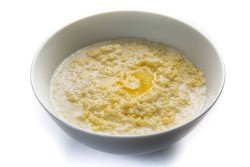
- Rinse a glass of cereals under running water, pour into a saucepan and pour two glasses of purified water.
- Cook over medium heat until boiling.
- As soon as you notice that the foam has appeared, turn down the heat and remove the film.
- Continue cooking until the water is completely absorbed into the grains.
- Boil two cups of milk on a separate burner.
- Pour the boiled milk into a pot of porridge immediately after the cereal has completely absorbed the water.
- Continue to cook the mixture over low heat, stirring constantly.
- As soon as the millet absorbs the milk, add salt and sugar for flavor, remove the dish from the burner and serve it on the table.
Interesting video
We suggest you watch this video:
Conclusion
Porridges are one of the most healthy dishes for our body. They are able not only to saturate a person, but also to help overcome various diseases of the gastrointestinal tract, liver, kidneys and other organs. It is not for nothing that patients in most hospitals are fed various cereals. They help to recover faster after severe surgical interventions, as well as long-term illnesses.


